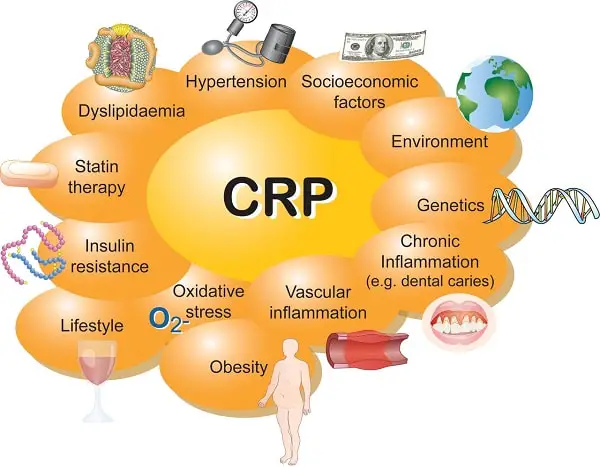
It is produced mainly by the hepatic cells in response to increases in proinflammatory cytokines levels during the transcription phase, interleukin (IL)-6, by its key transcription factors, upregulates the production of cytosine-cytosine-adenosine-adenosine-thymidine (CCAAT)-enhancer-binding proteins (C/EBP) β and C/EBPδ and regulates the synthesis of CRP in this process IL-6 signaling may be additionally reinforced by tumor necrosis factor (TNF) and IL-1β, as both of these cytokines enhance the transcription rate of CRP. Synthesis and metabolismĬ-reactive protein, an acute phase reactant, belongs to the pentraxin family and is a key protein of innate immunity. This review article also discusses metabolism, biological functions, and various therapeutic options for CRP reduction. DiscussionĪfter the analysis of selected articles, we found that a wide range of non-communicable diseases like cardiovascular diseases, diabetes mellitus, stroke, hypertension, cancer, obstructive sleep apnea, rheumatoid arthritis, age-related macular degeneration, Parkinson's disease, and Alzheimer’s disease are associated with CRP. We have reviewed selected references and cross-references of these articles and various textbooks also.

Our study was primarily targeted to find the role of CRP in non-communicable diseases. Our investigation included studies on humans of 18 years and above, published in the last 15 years, and in the English language, and studies performed on animals and in non-English language were excluded. ReviewĪll relevant articles were identified and were systematically searched through the PubMed, Medical Literature Analysis and Retrieval System Online (MEDLINE) database, and UpToDate till June 2022 by using the following Medical Subject Headings (MESH) words: Acute phase reactants, autoimmune diseases, biomarker, cardiovascular diseases, cancer, c-reactive protein, cerebrovascular diseases, high sensitivity c-reactive protein, diabetes mellitus, inflammation, obstructive sleep apnea, and stroke. The Hs-CRP test measures even low levels of inflammation and indicates the risk of cardiac disease and stroke. The Hs-CRP is used as a predictive marker of cardiac disease risk and stroke in otherwise apparently healthy people or individuals with or without risk factors for the development and progression of these disease conditions. It gives us an estimate of general levels of inflammation in our body, giving an idea of the inflammatory status. High sensitivity is a new modified assay which measures very low levels of CRP in plasma. The high-sensitivity C-reactive protein (Hs-CRP) is a biochemical test which is a highly sensitive quantification of CRP. It is commonly but incorrectly believed that high-sensitivity and conventional CRP are two different entities. Although the term acute phase reactants is used, its level also increases in various chronic disorders like autoimmune diseases, malignancy, chronic wounds after injury, inflammatory conditions, and metabolic disorders. It was discovered from the serum of patients suffering from pneumonia caused by pneumococcal bacteria during the acute phase. It is an indicator of the ongoing inflammatory process and various diseases in our bodies. Further, its clinical significance in chronic inflammatory and degenerative diseases of the nervous system and other common non-communicable diseases, including recent advances in the management of various diseases, has also been discussed.Ĭ-reactive protein (CRP), a positive acute phase reactant (protein), was first discovered in response to inflammation in the hepatocytes and released into the blood. This review article discusses the role of Hs-CRP and its isoforms in the pathogenesis of various disease conditions, factors affecting its serum concentration, its prognostic value, and its comparison with other risk factors.

Numerous pharmacological and non-pharmacologic interventions in the form of lifestyle modifications, exercise, and cessation of smoking are being investigated to study their effect on reducing serum C-reactive protein (CRP) levels. Various drug intervention trials demonstrated positive results in reducing Hs-CRP in individuals with raised levels. In this context, among available biomarkers, high-sensitivity C-reactive protein (Hs-CRP) is considered to be the best-suited marker. Therefore, the need to search for novel, affordable, and easily accessible biomarkers and risk factors for non-communicable diseases continues, which can predict the future risk of having these diseases with greater accuracy and precision. Non-communicable diseases like cardiovascular diseases, cerebrovascular diseases, diabetes mellitus, and cancer are very common causes of death worldwide.


 0 kommentar(er)
0 kommentar(er)
